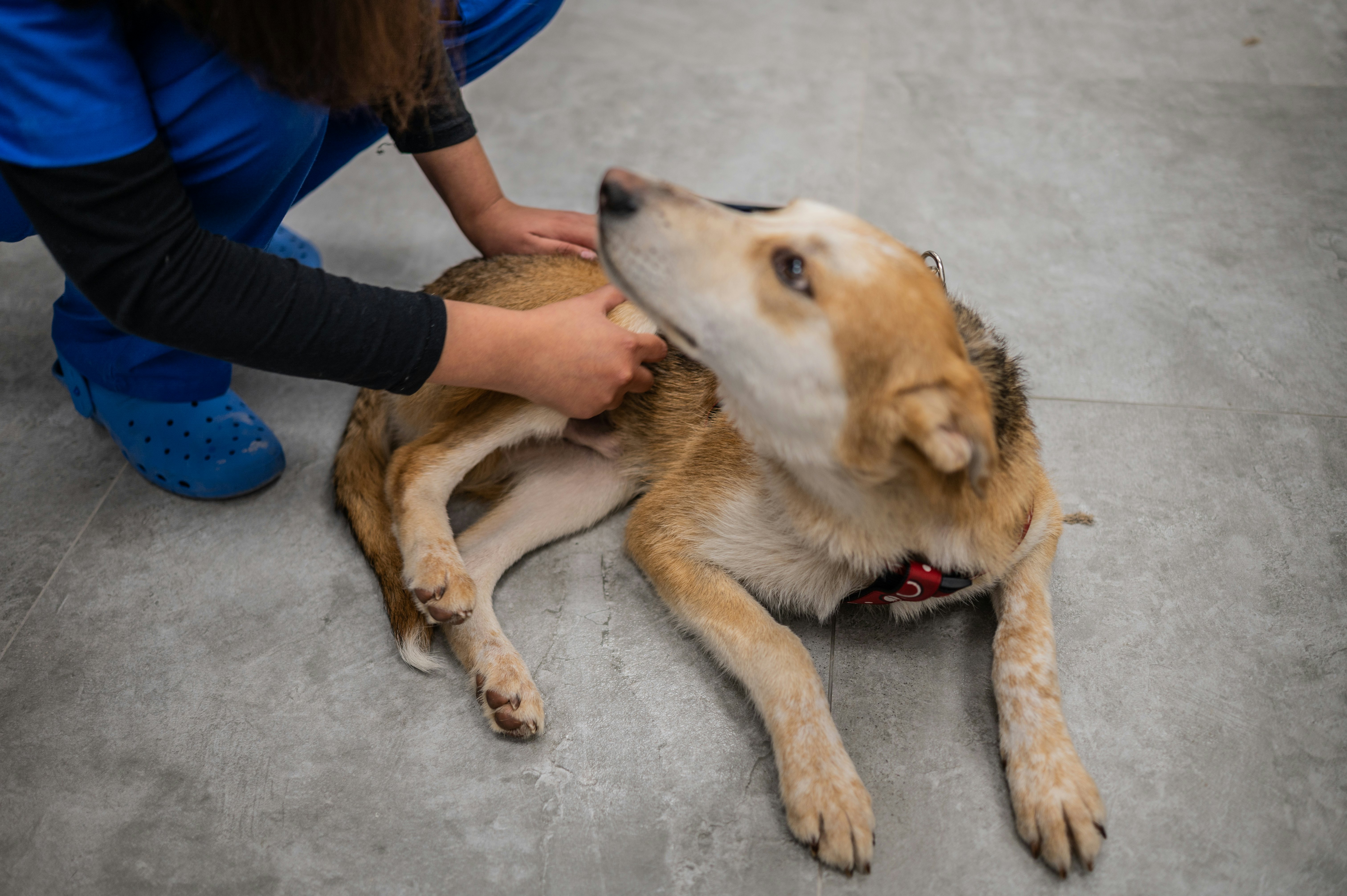
Everyone knows the universal sign of feline contentment: Curled up on a couch with their humans petting them, cats will often let out the slow rumble of a purr.
What you may not realize, though, is that the simple act of petting is actually a form of massage. Experts say it, and more specialized massage techniques and therapies like acupuncture can do wonders for your pet’s health — from easing stress and anxiety to preventing muscle injury and reducing arthritis pain.
How does massage therapy for animals work?
In humans, massage is an ancient medicinal practice that targets muscles and soft tissue, encouraging blood and lymphatic fluid circulation in part by relaxing the nervous system. Health benefits include reducing muscle tension, improving joint mobility and flexibility, and reducing stress hormones like cortisol.
While you and your cat or dog aren’t the same, the underlying mechanism and accompanying benefits are believed to be close enough given similarities in physiology, Jessica Bunch, assistant professor of integrative veterinary medicine at Washington State University College of Veterinary Medicine, tells Inverse.
“From the limited studies we have — and we don’t have a lot of studies — it does look like [massage] has the same kind of effects [in animals and humans],” says Bunch. “So decreasing cortisol levels and reducing blood pressure but also increasing things like pain tolerance and potentially increasing gastrointestinal function.”
Massage also helps improve the bonding between an animal and its owner, leading to a release of the feel-good hormone oxytocin and a healthy slash in stress, adds Bunch.

Other techniques like acupuncture, where fine needles are inserted at strategic points in the body, are especially helpful at alleviating pain for animals with arthritis, Robert Koh, associate professor of clinical veterinary sports medicine and rehabilitation at the University of California, Davis, tells Inverse.
“The problem with arthritis is that it gets worse as time goes by, and sometimes no [pain] medication will [help]. Especially when an animal develops chronic pain, it’s very hard to control even if you use multiple medications,” says Koh. “That’s how acupuncture or massage comes into play because it’s a nonpharmacological approach. When you combine acupuncture with medication, you’re able to control the pain better, more effectively.”
Some studies in lab animals suggest the centuries-old practice originating in China encourages the body to make its own innate painkiller (called endogenous opiates) and shut off pain circuits as well as the needles causing teeny tiny injuries that promote healing.
One 2006 study published in the journal Vet Record found that acupuncture granted pain relief for up to six months for dogs with hip dysplasia compared to dogs who didn’t get the treatment. Similarly, a 2017 study published in the journal Veterinary Anaesthesia and Analgesia found that after getting spayed, cats who got acupuncture didn’t need pain medications as much as a control group of cats.
What kinds of animal massage therapies are there?
There are a variety of techniques out there targeting different issues like calming, improving circulation, or range of motion. Some of these techniques, like gentle stroking, rubbing, or kneading (a technique where you apply pressure in circular motions to compress the muscle, and then you release it), are simple enough for pet owners to do themselves. Others, like myofascial release or acupuncture, require a trained professional, whether a veterinarian or a certified massage therapist, both Bunch and Koh note.
“One [technique] I commonly teach the owner to do is acupressure, a combination of massage with acupuncture,” says Koh. “We teach them to use their thumb or fingers to stimulate acupuncture points, [applying] a couple of ounces of pressure for a few seconds or minutes.”

If you’re interested in learning more about techniques to do at home, Bunch and Koh say there are plenty of instructional videos online taught by veterinarians and licensed therapists, as well as certifications through organizations like the National Board of Certification for Animal Acupressure and Massage.
When should you get or give your pet a massage?
Bunch and Koh say that as long as your pet tolerates being touched (more of an issue with cats and exotic animals like birds and rabbits), then it’s fine to give them a gentle massage regularly. Especially for active dogs or “weekend warriors” (dogs that get most of their playtime during the weekend), a good rubdown before physical activity can help with joint mobility and warm up muscles.
“The ideal massage circumstance is that you want your pet to be comfortable. You wanted to be in a quiet, relaxed environment where they will relax because if they’re not relaxed, [the massage] is not going to have the maximum benefit,” says Bunch.
Massage therapy may even prevent or slow down the progression of age-related conditions such as arthritis and hip dysplasia. However, both Bunch and Koh say if your pet has these or other medical conditions that may be impacted by massage, like ongoing skin issues, fever, or even cancer (increasing blood flow to where a tumor is localized may inadvertently feed it, says Koh), it’s best to consult your veterinarian before trying anything at home.
At the end of the day, massage, when done properly, may be a great way of not only bonding with your pets but also improving their quality of life — and hopefully adding many more years of cuddles and companionship to come.







